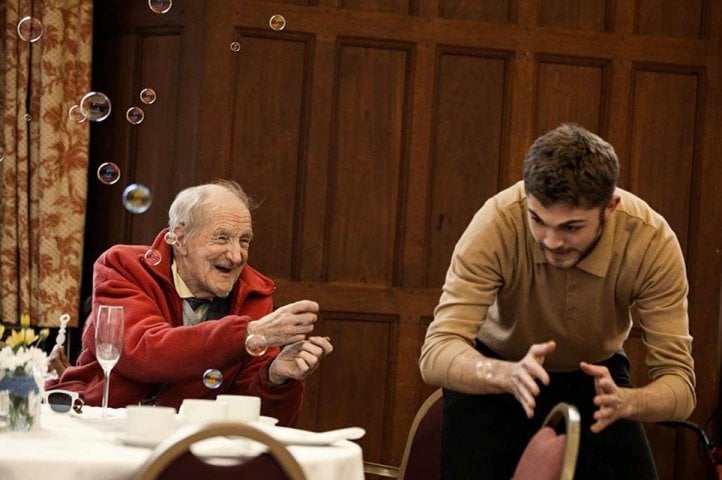
A performance of Chatback by Wyldwood Arts
Photo: Camilla Adams
A simpler funding system
Budget cuts have forced Bristol City Council to change the system it uses to fund arts and culture activities. Philip Walker explains its new cultural investment programme.
Bristol is known for its varied programme of arts and cultural activity and the range of locally grown but nationally and internationally recognised arts activity. Bristol City Council supports and develops this wide variety of arts and cultural activity in a number of ways, but like many local authorities we face significant financial challenges, with pressures across all services.
One of the aims is to create resilient organisations that will be able to thrive while relying less heavily on public subsidy
The culture budgets will be reduced by over 20% from 2018 with a further reduction expected in 2022. Simultaneously, a newly articulated Cultural Strategy – co-ordinated by a group of arts and culture professionals including the city’s Head of Culture, Laura Pye – has necessitated the overhaul of the previous funding model for the arts.
Having consulted with the sector in the city and beyond, our Cultural Investment Programme supports the arts over the next four years. The Cultural Strategy identifies Bristol as a city of originators, a city of imagination and a city of openness – and it’s these three themes that the Cultural Investment Programme supports.
A simpler system
The previous system separated out funding between the Creative Seed Fund to seed new arts ideas and projects, and the Community Festivals Fund, both of which were annual funds renewed each year, and a Key Arts Provider Fund that supported larger organisations over three years.
Separating the funding into two small but similar funds over 12 months created a lot of work and did not provide certainty to organisations needing to plan over a longer period. Treating arts and events separately was not helpful and some organisations would be eligible for either, both or neither.
Other feedback was that larger organisations, that had missed out on the three years of funding, could perish before the next round.
We have addressed this by creating three funds with different cycles and amounts:
- Originators: an annual fund of up to £5,000
- Imagination: Two-year funding of between £5,000 and £40,000
- Openness: Four-year funding for larger organisations, where we fund up to 5% of their annual turnover
Specific conditions apply to each stream, but the aim is to make it simpler for the smaller amounts and straightforward for organisations to demonstrate how their bid meets the objectives of the fund. Any artform and festival may apply for any of the funding streams, rather than a specific fund for festivals and another for arts organisations.
There are clearly defined aims and objectives for the funding programme, and so assessments of funding bids will be made against them. One of the aims is to create resilient organisations that are able to thrive while relying less heavily on public subsidy, so evidence of good planning, finances and the ability to adapt to generating further income will be a requirement.
An open and transparent process
We have published application guidelines, criteria and explained how decisions will be made on each fund. An initial session with the sector was met positively and the feedback was absorbed into shaping the funds and the criteria.
Being open and transparent about the process of applying, the eligibility criteria, the decision-making process and the amounts of funding available is critical to gain the confidence of the city’s art sector.
We believe that by co-designing the funding streams, aligning it to our Cultural Strategy, and then sharing our plans widely and early on, and by using our own experience and expertise and taking advice from others, we have created a model that will continue to see arts and culture thrive in the city.
Philip Walker is Head of Engagement for Bristol City Council’s Culture Team.
www.bristol.gov.uk
How have the arts been affected by recent changes in local government, and how can they be steered towards a thriving future? Have your say via ArtsProfessional’s short Pulse survey.
Join the Discussion
You must be logged in to post a comment.